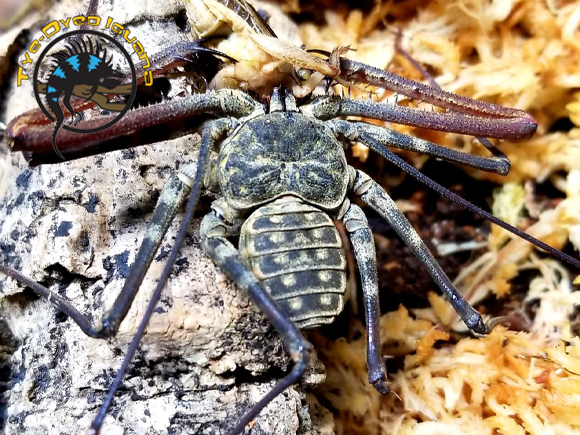Have You Heard of These Invertebrates?
We talk a lot about reptiles, amphibians, and even fish on this blog, but we don’t cover invertebrates as often outside of occasional spider talks and articles about bioactive custodians. So it seemed like time to talk more about the various types of invertebrates people keep. Many invertebrates are kept as pets in their own right, not just as a cleanup crew for a reptile or amphibian.
Check out these different types of invertebrates and see if any of them look interesting to you…
Isopods
Let’s start with something most of you have probably heard about. Isopods are popular microfauna for bioactive terrariums. They come in so many varieties, though, they can be fun to keep all on their own, and they don’t require much space.
Praying mantis
The praying mantis is an alert, visual creature that is also excellent at capturing its prey. They are one of the scariest animals in the world if you happen to be an insect or a male praying mantis. Fortunately, it is not dangerous to humans and can even be handled.
Giant vinegaroon (whip scorpion)
The giant vinegaroon is also known as a whip scorpion. This name is a bit of a misnomer, however, because the vinegaroon is not actually a scorpion. It looks very similar to them, but it is a different kind of arachnid.
The giant vinegaroon has a whip-like tail that is not venomous, and these creatures are not dangerous to keep as pets. They tend not to bite and can be handled fairly easily.
It should be noted that if you startle them, they can spray you with a mild acid that smells like vinegar. This acid is not strong enough to cause you harm.
Tailless whip scorpion

Tailless whip scorpions are similar to vinegaroons in appearance, and they are related species. You’ll notice, though, that the tailless whip scorpion has a shorter body compared to the giant vinegaroon’s elongated one.
Also, the tailless whip scorpion does not spray acid. You can safely handle a tailless whip scorpion, BUT...know this interesting fact about them. They have a special move called “teleportation,” in which they move extremely fast for a short distance. It can be startling if it happens while handling, so be careful not to drop or grab them.
Giant millipede
Giant millipedes are extremely fast, which makes sense, given their ridiculous number of legs. Watching a millipede walk is pretty cool because the legs move in a wavelike pattern. Each segment of the torso on a millipede has two pairs of legs, which is a great way to tell them apart from the similar invertebrate, the giant centipede, discussed below.
Another important distinction between millipedes and centipedes is that millipedes are not venomous, and they are safe to handle.
Giant centipede
Centipedes look quite similar to millipedes, but an easy way to tell them apart is that centipedes only have one pair of legs per torso segment. Centipedes, like millipedes, can move quite fast. Unlike the giant millipede, however, the giant centipede is quite venomous and IS NOT SAFE to handle.
If you keep a centipede as a pet, you want to make sure it stays securely in its enclosure. It is possible to die from a centipede sting.
Jumping spider
If you want a cute spider, you can’t get much cuter than jumping spiders. They are, of course, tiny, but if you can get up close with one, you’ll see how adorable they are. Popular in macro photography, jumping spiders have big eyes that add to their appeal as pets.
Another interesting thing about jumping spiders is that they are incredible predators. Unlike most spiders, they will attack prey that is even larger than they are by jumping at them and grappling them.
These spiders are not venomous and are safe to handle. You’ll just want to make sure they don’t get squished or lost.
Blue death-feigning beetle
I’ll end this article with one of the easiest to care for invertebrates available as a pet. The blue death-feigning beetle has very few needs. A box with sand and some food is enough to keep it happy, though some hides and décor are preferred.
They are desert scavengers and don’t need water because they get plenty from their food. These pets are super easy to handle and won’t bite or scratch.
Come into The Tye-Dyed Iguana in Fairview Heights to check out what kinds of invertebrates we’re currently carrying.
